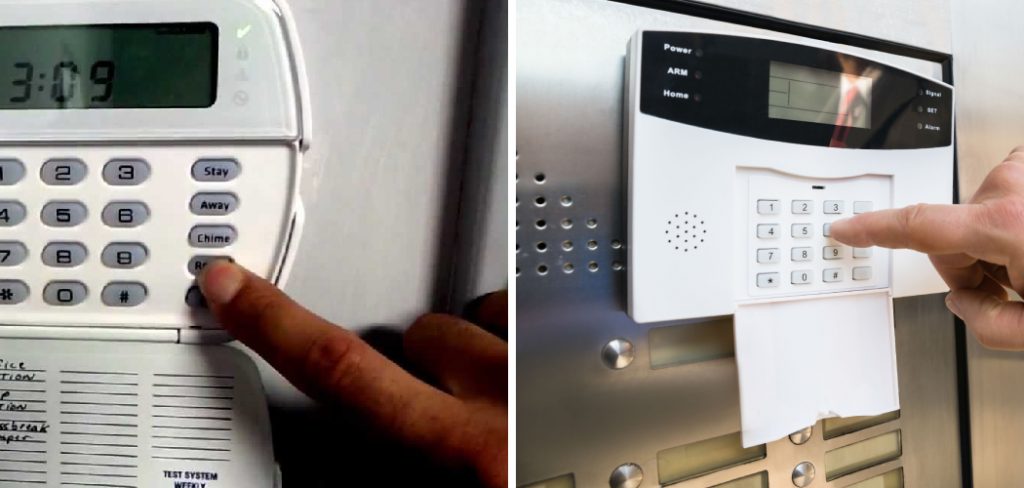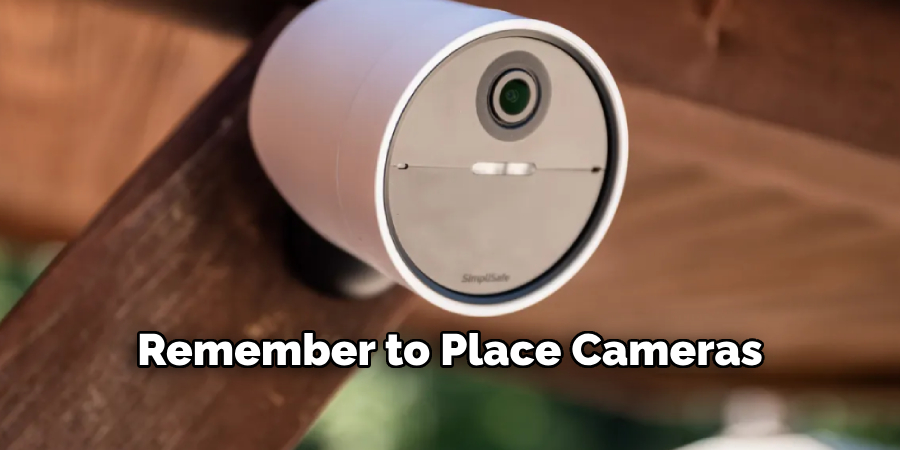Setting up a security alarm requires careful planning and execution to ensure your home or business is adequately protected. While security systems provide peace of mind by deterring would-be intruders and alerting you of any breaches or issues, it is essential to understand their proper installation and configuration.

An improperly set security alarm may provide a false sense of security or, even worse, fail to detect real threats. Through experience both professionally installing systems and managing my home security, I have learned important lessons about choosing the right equipment, placement of sensors and cameras, establishing zones, and testing procedures that will help maximize your protection and avoid potential blind spots.
In this post, I will share the step-by-step process of how to set a security alarm and key considerations for setting up your own reliable and effective security alarm properly from the beginning.
What Will You Need?
Before we dive into the steps of setting up a security alarm, it is important to gather all necessary equipment and tools to ensure a smooth installation process. The specific items and tools required may vary depending on the chosen system and your individual needs, but generally, you will need the following:
- A security alarm system kit or individual components (control panel, sensors, cameras)
- A power source (outlets or batteries)
- Mounting hardware (screws, brackets, adhesives)
- Drill and drill bits
- Ladder (if necessary for installation at elevated locations)
- A smartphone or computer for remote monitoring and control
It is essential to carefully read and understand the instructions provided with your security alarm system kit before beginning installation.
10 Easy Steps on How to Set a Security Alarm
Step 1. Choose the Right Alarm System
When it comes to setting a security alarm, the first step is to choose the right system for your needs. There are many different types of plans available, ranging from basic models that simply sound an alarm when triggered to more advanced techniques that can be connected to a monitoring service. Consider your budget and the level of security you need before deciding.
Step 2. Install the System Properly
Once you’ve chosen the right system, it’s time to install it properly. This means following the manufacturer’s instructions and ensuring all components are connected and working correctly. If you don’t feel comfortable doing this yourself, you may want to consider hiring a professional installer who can ensure that everything is done correctly and securely.

Step 3. Program Your Security Code
The next step in setting up your security alarm is programming your security code into the system. This code should be kept secure and never shared with anyone else, as it is used to arm or disarm the system whenever needed. Be sure to set up multiple codes if necessary so that different household members can access the system if required.
Step 4. Position Your Sensors and Cameras
The placement of sensors and cameras is crucial in maximizing the effectiveness of your security alarm system. Sensors should be positioned at all potential entry points, such as doors and windows, while cameras should cover broad areas of your property like the entrance, backyard, and garage.

It is recommended to use a mix of motion sensors and door/window contacts for comprehensive coverage. Remember to place cameras at an elevated location to avoid tampering. Always test each sensor and camera after installation to ensure they function correctly and provide the coverage you need.
Step 5. Configure Alarm Zones
Configuring alarm zones is a critical step when setting up your security alarm. Zones are specific areas of your property that you want to monitor separately. For instance, you might set up one zone for the ground floor of your house, another for the upper floor, and another for the garage or shed.
Proper zoning allows you to arm or disarm specific areas of your property without affecting the rest. This can be particularly useful if you want to secure certain sites while you or your family members are present in others. Be sure to label each zone clearly in your control panel for easy identification and management.
Step 6. Set Alarm Notifications
Setting up alarm notifications is a critical feature that allows you to receive alerts on your smartphone or computer whenever the alarm is triggered. This can provide peace of mind when away from home or in another room. You can also set up notifications for specific zones, alerting you if there is movement in a restricted area.
Step 7. Test Your Alarm System
Before relying on your security alarm system to protect your property, it is essential to test it thoroughly. This includes testing each sensor and camera individually and the overall system. Trigger each sensor and ensure you receive an alert on your smartphone or computer. Also, check that the alarm sounds correctly when triggered and that the monitoring service (if applicable) receives a notification.
Step 8. Consider Additional Security Measures
While a security alarm system is a great way to protect your property, there are additional measures you can take to enhance your security further. This may include installing motion-activated lights around the perimeter of your property, using smart locks on doors and windows, or even having a guard dog trained for protection. Be careful to consider any potential risks and properly train yourself or your pet before relying on them as a security measure.

Step 9. Practice Proper Maintenance
Like any other electronic device, your security alarm system requires proper maintenance to function effectively. This includes regularly testing sensors and cameras, replacing batteries, cleaning lenses, and updating software if necessary. It is also essential to notify your monitoring service of any changes to your emergency contact information.
Step 10. Stay Informed and Updated
Last but not least, it is important to stay informed and updated on the latest security measures and technologies. This includes regularly checking for updates from your security alarm system manufacturer or subscribing to a reputable security newsletter. Staying informed can help you make necessary updates to your system and keep your property secure in an ever-changing landscape of security threats.
By following these 10 easy steps, you can set up a comprehensive and effective security alarm system for your property. Remember to prioritize the safety and security of yourself and your loved ones by regularly testing, maintaining, and updating your plan as needed. Stay safe!
5 Additional Tips and Tricks
- Regularly Update Your System: Just like any other tech device, it’s crucial to update your security alarm system. Regular updates will ensure optimal performance and prevent potential security loopholes.
- Familiarize Yourself With The Alarm System: Know the ins and outs of your system. Understanding its features and settings will help you to set and reset the alarm as needed effectively.
- Test Your System: Regular testing is essential to confirm your security system is working properly. Make sure to schedule routine tests to detect any glitches or malfunctions early.
- Have A Backup Power Source: In case of power outages, it’s essential to have a backup power source to keep your alarm system running. Consider investing in a generator or a system with a built-in battery backup.
- Securely Store Your Alarm Codes: Always keep your alarm codes confidential and change them regularly. Avoid using obvious codes like birthdays or anniversaries.

With these additional tips and tricks, you can ensure your security alarm system is operating at its best capacity.
5 Things You Should Avoid
- Avoid Neglecting Regular Maintenance: Like any other device, your security system requires regular maintenance to function at its best. Failure to do so can lead to malfunctions or total system failure.
- Avoid Sharing Your Alarm Codes: Never share your alarm codes with anyone who doesn’t need to know them. This could create opportunities for unauthorized access to your property.
- Avoid Ignoring Alerts: If your alarm system sends you an alert, don’t ignore it. It could be a sign of potential unauthorized activity or system errors.
- Avoid Placing Sensors In Obstructed Areas: Ensure your alarm sensors are not placed in areas where their signal could be obstructed. This includes behind large furniture, curtains, or other large objects.
- Avoid Using Default Passwords: Many alarm systems come with default passwords. These are often easily guessable and should be changed immediately to a unique, secure password.
By avoiding these common mistakes, you can ensure your security alarm system is running smoothly and effectively.
Conclusion
In conclusion, setting a security alarm doesn’t have to be intimidating once you know the basics. By familiarizing yourself with the hardware, wires, and components that are included in this project – not to mention following our simple instructions on how to set a security alarm – you should now be able to set up your security system. So go out there and secure your home today!
Don’t forget to update and test your system regularly at least twice a year. Remember, it is essential for virtually every home today and could potentially save lives in the future. The knowledge that your home is safe from theft and burglars will provide an anxiety-free sleep when all is said and done. Start protecting your family now so you can rest peacefully tonight!

